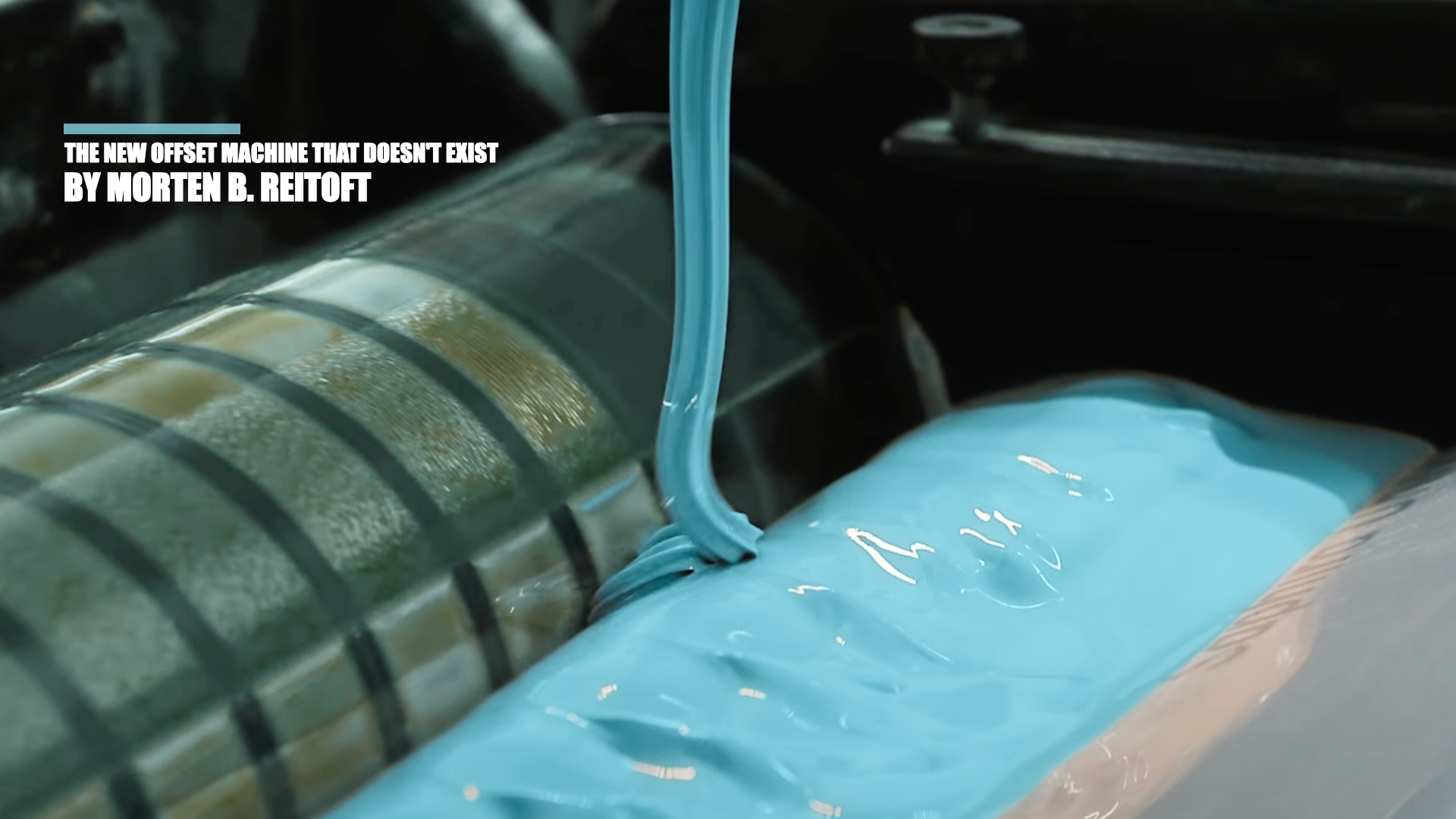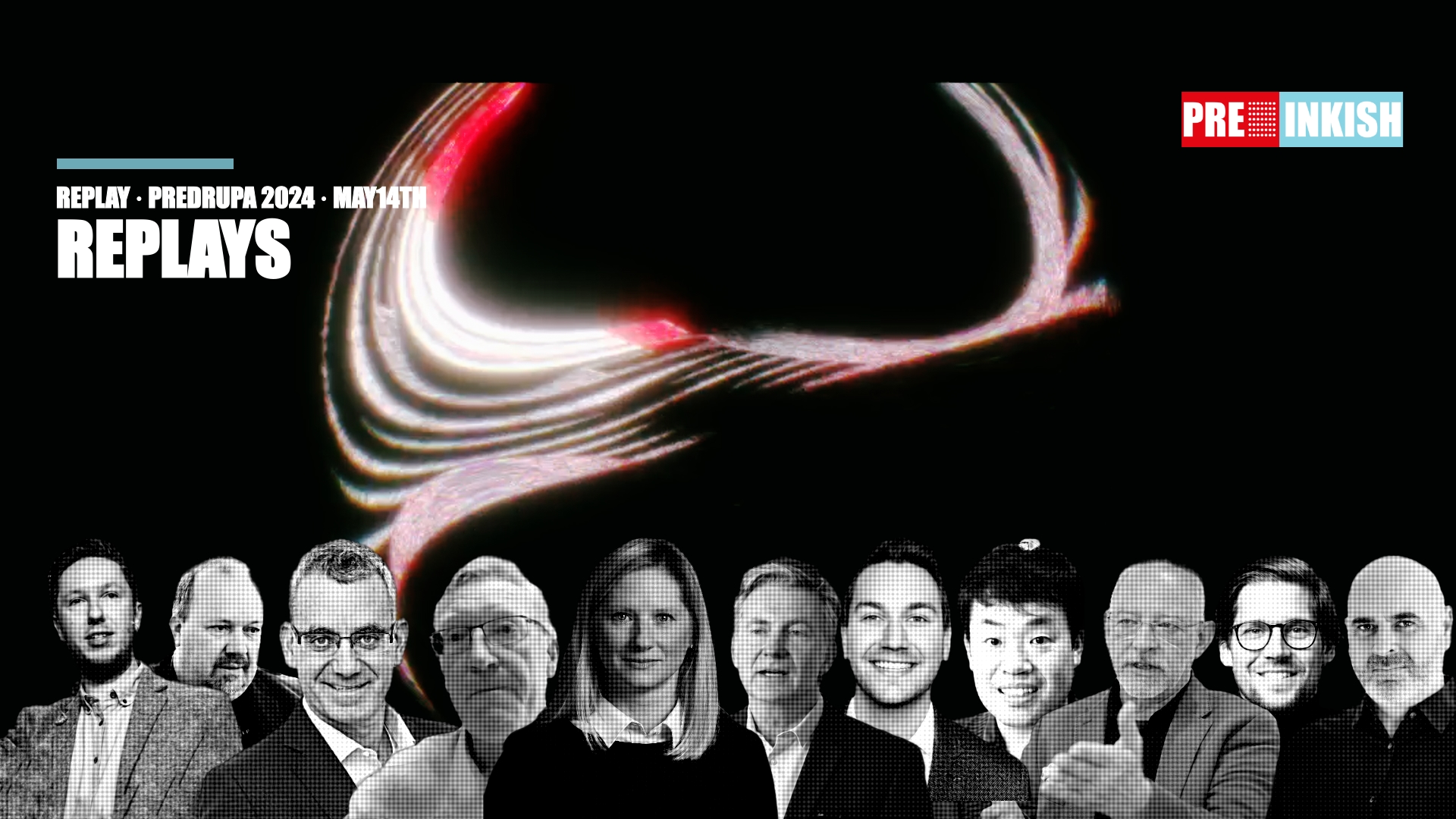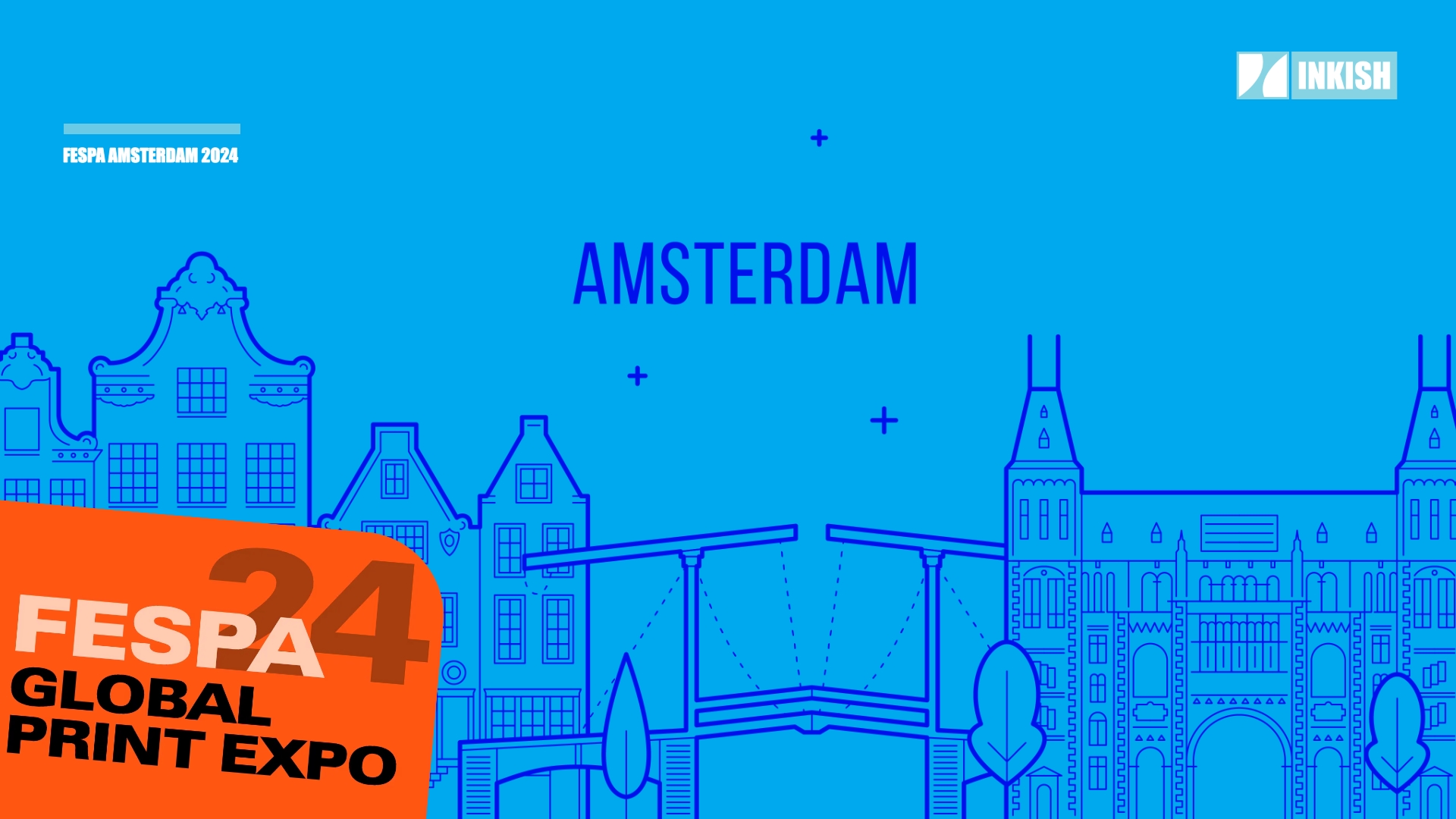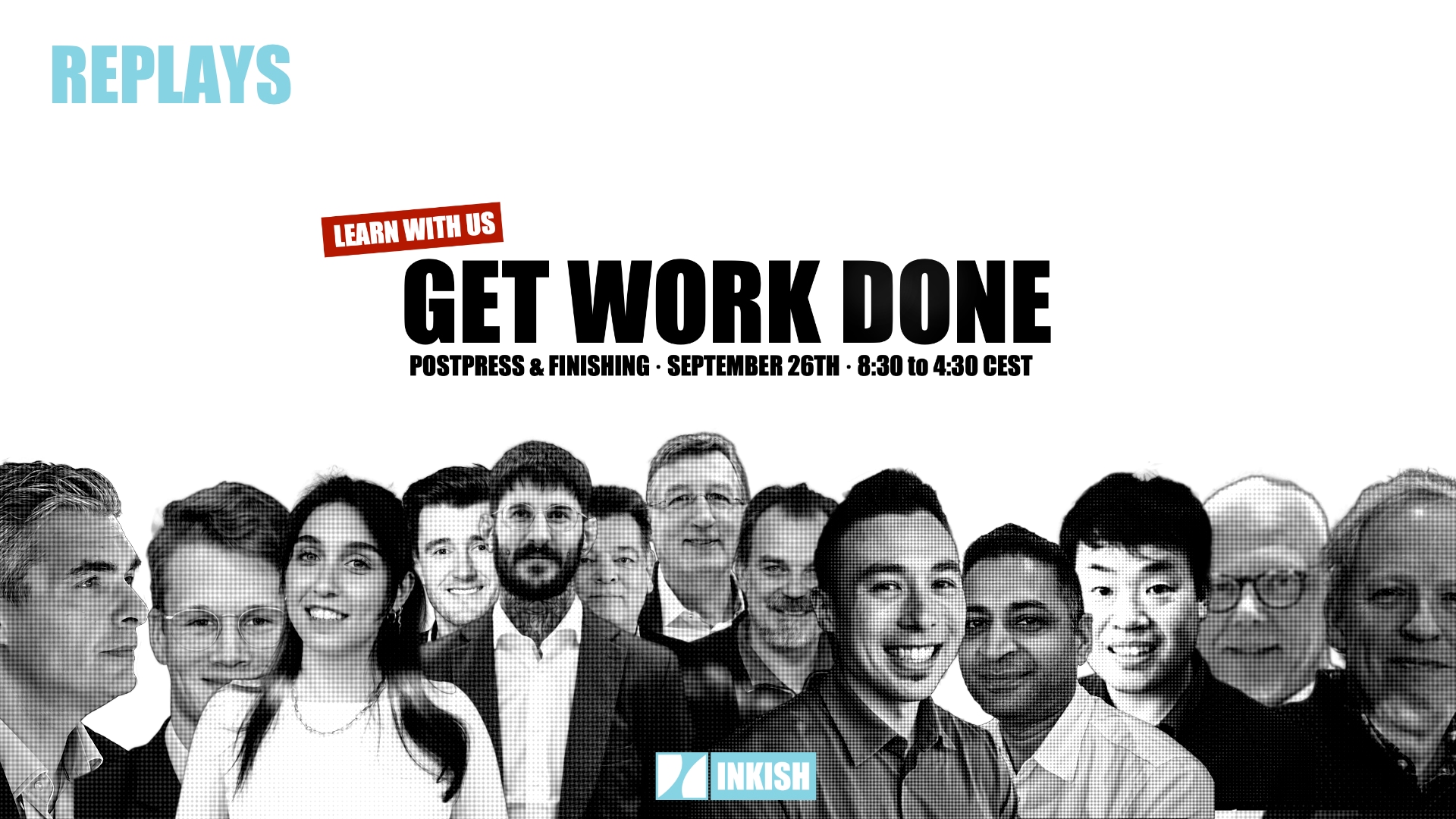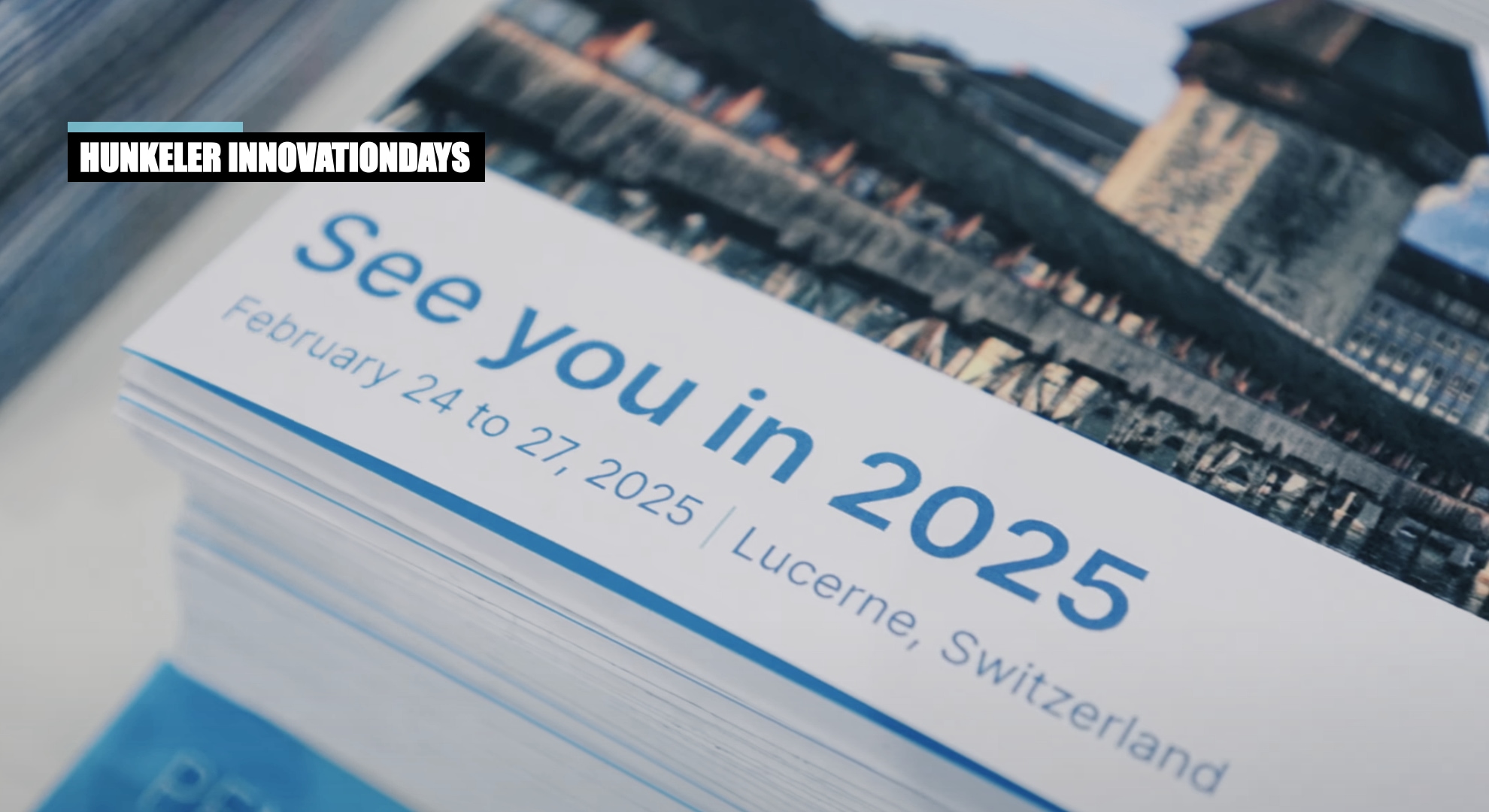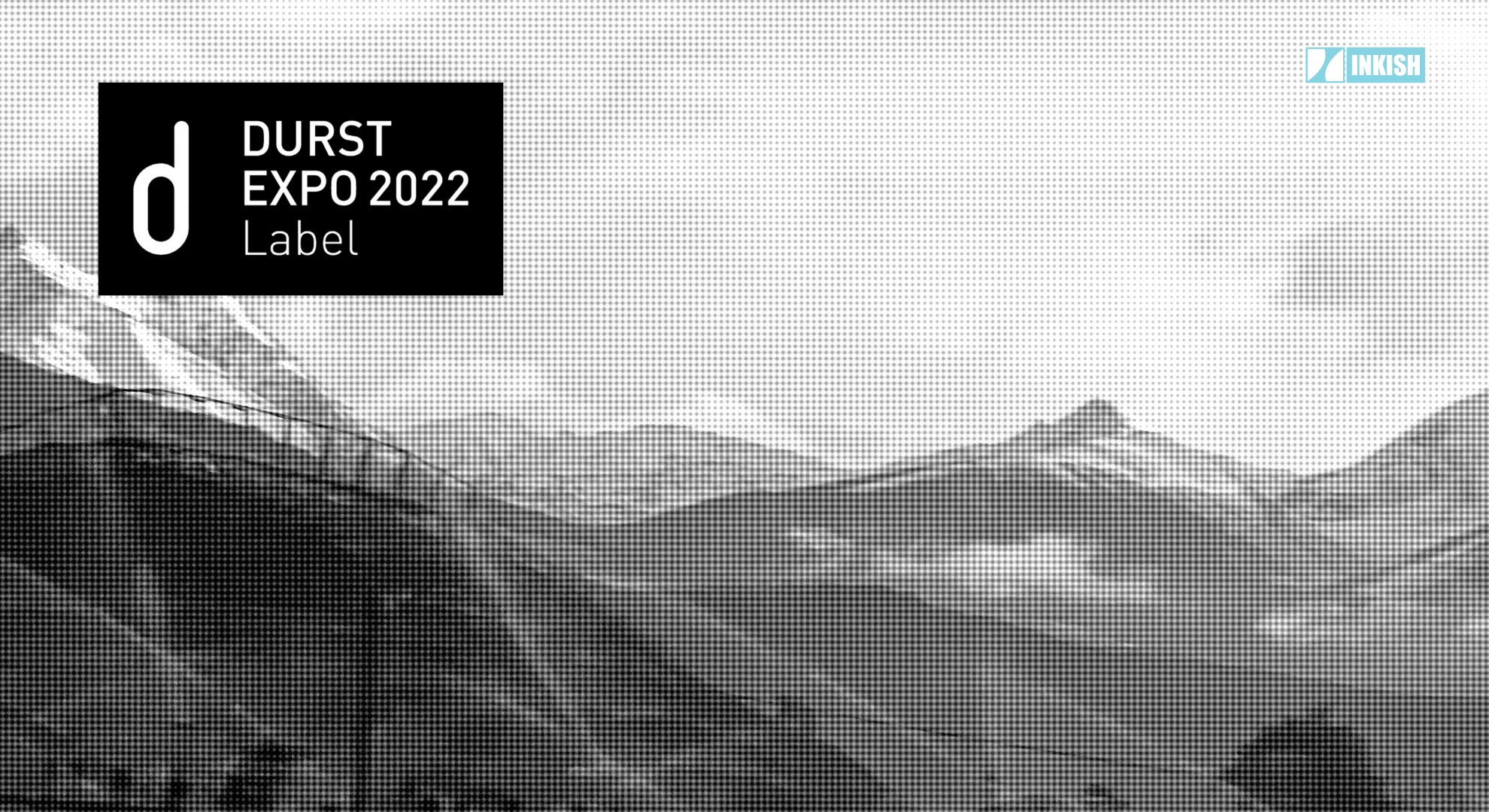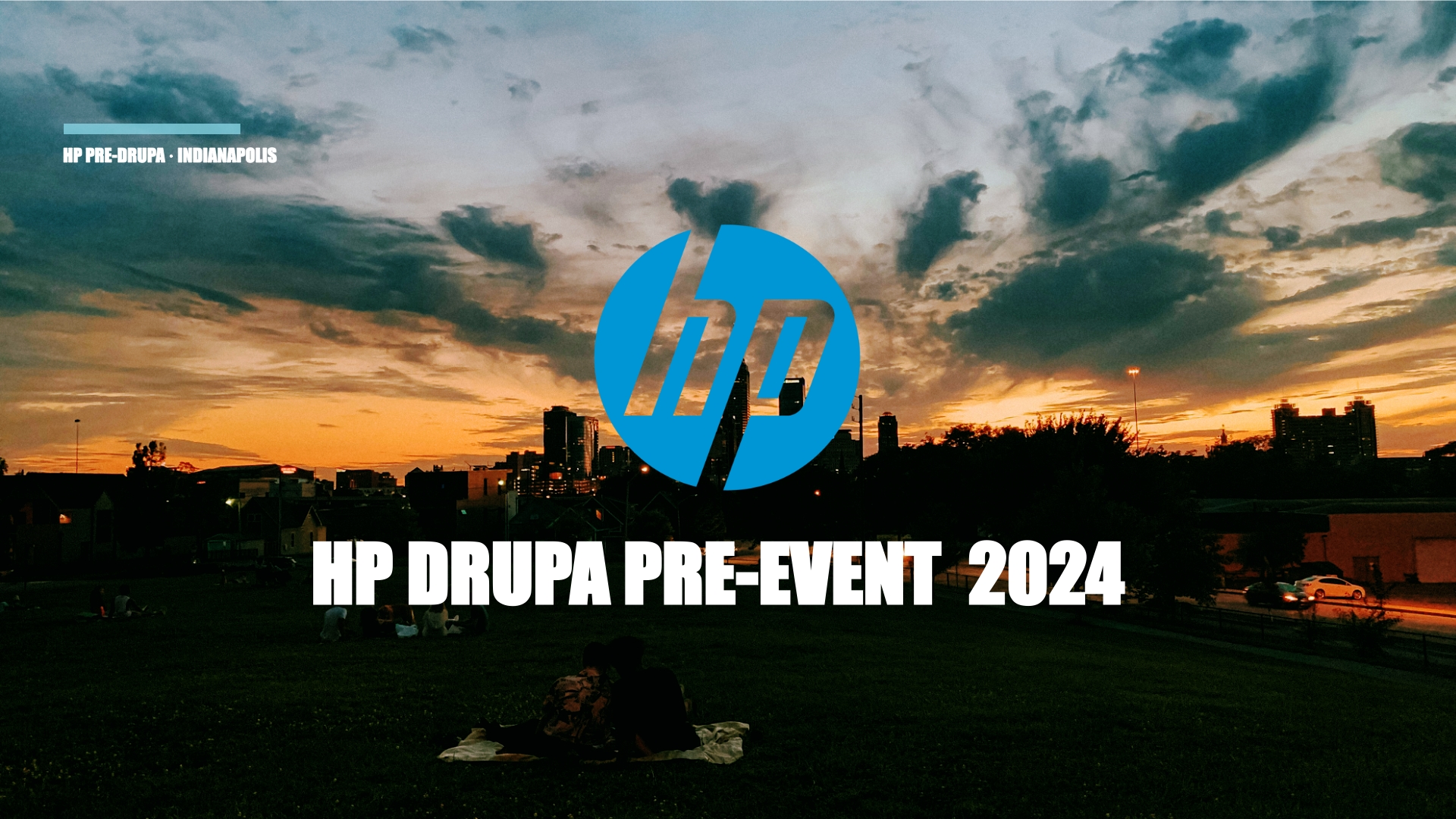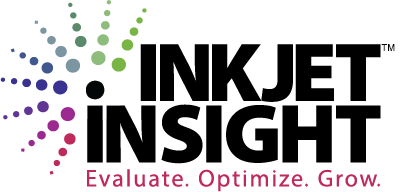Elizabeth Gooding · Over The Skype · Inkjet Insight
Elizabeth Gooding is one of the two founding partners of INKJET INSIGHT. Only three years old they have established themselves as the number one go-to resource for inkjet. In this ‘Over the Skype’ session, Elizabeth Gooding talks about how they are serving their audience and how they get the information that keeps them up-to-date. Great story.
As with all our ‘Over the Skype’ interviews, quality is limited to bandwidth, web-cams, and ability to literally LIVE mix the conversations. However, it works, and with Over the Skype, we will bring you more than 20 exciting people, and angles on the industry as it is right now.
Enjoy!
This is a Morten from INKISH.TV and for those who have seen these episodes over the past couple of weeks, we call it, “Over the Skype,” and that is due to the coronavirus. We are not really able to go out, so we invite people to this little, “Over the Skype,” session. And this time, I have my good friend Elizabeth Gooding who is a part of Inkjet Insight and lives in Boston in the US. So far away from where I’m sitting. I’m sitting just outside Copenhagen in Denmark. Elizabeth, welcome to my show.
Thank you, Morten. It’s nice to talk to people and it’s particularly nice to talk to you.
You’re so kind. Actually, last time I think that you and I met in person. That was actually in a extremely nice apartment in Lucerne, in Switzerland, wasn’t it?
Yes. You’re going to start rumors.
I know, but we were there with other people and there was drinks and food.
Lots of other people.
Yeah, and that was the first time I got to meet you in person. Before I met you, I read a book that I found in Canon’s demo room in Boca, in Florida about Inkjet. It was kind of an eyeopener to me and I found out that you and your partner in crime is the ones that know everything about Inkjet. Isn’t that the case?
Well, I don’t know about everything because it changes so often. It’s a challenge to keep up. But yeah, my partner Mary Schilling, she’s a great compliment to me because I do a lot of the software and the economics and the workflow and things like that. She actually gets in there with the different machines and does print quality analysis and actually, has worked on development of a lot of machines. So she’s super technical.
We’re already way into this session here. So maybe you just introduce yourself a little bit more and talk about what is Inkjet Insight and what is it you do?
Sure. Thanks for asking. Yeah. Inkjet Insight is a brainchild of mine and Mary’s after we wrote the, “Designer’s Guide to Inkjet .” So that actually was a pretty good lead in, Morton. We said we’ve given some good information to designers, but there’s so much more to know and there really wasn’t a good independent source of both the data about all the different devices and the software and the paper and the media that it would run on, and as well as tips and tools for doing quality analysis and really more of the how-to, the hands on stuff, not, “Here’s the latest news release,” or the latest press release on who likes who’s printer and the lovey-dovey stuff between the OEM and customer and that. So we started Inkjet Insight to put all that information in one place in kind of an unbiased way. It’s been, I guess it’s three years right now. This is kind of an anniversary interview in a way.
Okay. Then I congratulate you on your three years anniversary.
Thank you.
One of the things that you just mentioned that I found quite interesting is that, I of course I understand that you are an independent and unbiased source of information for this kind of thing. But I was wondering because when you look at all these devices in the market right now, I know that maybe it’s Mary that is more into the technical side of it, but I was just wondering, when you look at all the opportunities you have with Inkjet, there are so many printers, there’s so many technologies, there are so many applications they can run, so how do you cope to get up to date on all these things?
It’s constant. It’s so much work, honestly. We do a lot of outreach to the OEMs. So we give them the opportunity to send us their updates and then make sure that we get that online. Then we work to make sure that when new things come out, we’re doing reviews pretty much across the board. There’s a lot, but it’s not like they’re coming out every week-
Of course not.
… and a little bit more slowly this year with Drupa being postponed until April.
Yeah.
But the other thing that we’ve done that makes our work a little harder is we also break out the listings into whether it’s dye or pigment, aqui, SUV, things like that because if you want to search in terms of appropriateness for a particular application segment, that’ll tell you more about not just the device, but kind of the configuration of the device. So yeah, it’s a lot of work.
But when you talk about how you break it out in these different, basically whether it’s pigment based, water, whatever technology is behind it, is that because it also from… Let’s say that you are a printer who wants to invest in an Inkjet device, is the technology behind it very important when it comes to what kind of applications it’s going to be used for?
Yeah, it really is. That’s very important. There’s no way… A buyer is never going to go to an online site and pick a printer and say things, “Bing, Bing, bing, this is it.” [crosstalk 00:05:37].
Five million bucks and just swipe the card.
Right.
Yeah.
Not that long ago if you were looking for a cut sheet printer, maybe you could because there was one acquiesced and one UV and that was it. But it’s really to help narrow the field of what you might be looking at, and it shifts. It shifts over time as well. So for a long time, you saw anyone in the transaction print world would really look at dye rather than pigment because it was a lot less expensive, and they didn’t need real depth of color and it was compatible with the papers they were typically working with and that type of thing. Now, transaction printers are having to up their game because you’ve got direct mailers who have the higher color quality moving into transaction print and just really, everybody’s having to up their game. [crosstalk 00:06:29]
Does it also mean that with this increased demand for higher quality, that the price per whatever measurements we do is falling as well?
Falling… I’m not sure about falling, but I would say that pigment and dye have… Let me process that further. Pigment and dye have come more in line, so there’s not the wide disparity between just a regular acquiesced pigment and acquiesce dye. However, now a lot of printers on their high end have come out with sort of these super inks that are pigment that are really… They’re high density inks and so those are significantly more expensive than even a normal pigment ink or a dye ink.
Is that like the one that, for example, we made an interview with Canon Europe a couple of weeks ago where they spoke about the new iX series where they have like… Is that the super ink that you’re talking about, the high density and the high pigmented kind of colors they’re offering?
Yeah. Yeah. So you have the high density inks from Canon and those work with their color grip spot place primer, and then HP’s has announced a new ink as well-
Yeah, LEP or something called that is now?
I think their trademark is Brilliant. They’re calling their Brilliant ink.
Yeah.
Also requiring, well, instead of having a bonding agent and a primer for different types of paper now, it’ll just have a single fluid that they’ll be able to use. But then if you look at the Ricoh with their VC pro-line, they’re very high end, high density ink doesn’t require any primer or any type of pre coding. I believe Screen also, has a high end pigment ink. Yeah. So there’s a number of them that work that way, but they’re more expensive.
Yeah. Just to conclude on this round, you said that still, you will pick the printer that fits the majority of your application. So let’s say that if you want to make a, let’s say books, then you select one printer. If you want to make direct marketing, that is another technology you will choose particularly.
Or if you’re trying to do multiple things because and more, that’s where the companies are. But a lot of times, companies want to look at based on not just the speed of the device, but it’s the web width as well. If it’s roll or web fed, sheet sizes, depending on what they’re doing, compatibility with their finishing. There’s so many things to think about and there’s sheet fed and then you mentioned the Canon and their I series and the iX. One of the advantages that they, and probably the Baltoro from Xerox in looking at sheet fed is that they can drive multiple stocks in the same job.
Yeah, which is of course very interesting when you talk about commercial print and that kind of the applications of course. You said that you are of course, also looking into the economy of these finances of these machines. I know that they have different levels of prices and applications and speed and sizes like that, but if you look at comparable equipment, it’s a huge difference in those calculations as well?
Yeah. When you look at inkjet economics, one of the things that I like to talk to people about is the fact that it doesn’t just happen when you’re deciding between devices. You have to think about it in terms of your particular business and how you justify the investment, how you look at your pricing, how you determine the cost of papers that you might use. There’s a lot of different ways of getting to the result, right? You could use a more expensive paper.
Yeah.
You could use a higher end device with pretreatment.
Yeah, yeah.
You could use more expensive ink and not use pretreatment and use more papers. [crosstalk 00:10:55].
There’s a lot of combinations.
There’s all these different things.
Yeah.
Yeah, and it also depends on how many different paper types you use and how often you’re going to change. So something that may look great as a web fed printer, if you’re not going to keep that baby running, all of a sudden it’s not a good deal and a lower entry point, lower volume machine might be better off.
Yeah, that’s great. Inkjet Insight is an online media, but do you also do consulting to advise people about the things? Or how would people get to that level of knowledge? Because as you just explained, just to figure out what equipment to invest in is not an easy task.
We do help, and a couple of things. We try to help people help themselves. So we’re not the kind of consultants that like to show up and stay for six months and do that. On rare instances, that happens particularly with what aspects of what Mary does with helping people test new equipment and to a new equipment and things like that, it can be longer. But in terms of selecting things, we try to help them gather their requirements effectively, really think about not just what they’re doing now, but what they could be doing so they don’t paint themselves in a corner as they say. Say, if all you’re doing is recreating what you do now maybe a little bit faster, how far ahead does that get? [crosstalk 00:12:27]
Yeah, I would say that it won’t take you very long time because unless you have invented the golden goose egg and they can just continue doing that forever, then maybe you don’t even need to change technology. Right?
Right, right. So people really have to think about if you know Joe and Mary down the street have the same device as you, how do you differentiate yourself? You have to think about the workflow and the service and how you can take the jobs on and how you can make that go straight through billing and support and understanding the next job. So we help people with that. We also help them optimize the machine once it’s installed so that they’re really running it the most efficient and effective way. Another aspect of my part of the business is actually doing very complex net system design, document design; bills, statements, complex, direct mail, regulatory documents, and those can be fairly long projects because you have to look at everything from where the data comes through to the branding guidelines or as I like to say, the brand police. Yeah. And then compliance, right? Get it all the way compliance and regulatory.
Yeah. Okay. Inkjet Insight is not just a matter of having the information about the technologies and the devices. And I also know that you will have a quite comprehensive sub straight database on different papers that works with the Inkjet. So you say that you’re also into the projects where you help people of, let’s say the forms, the designs and the obstacles. Is that one of the reasons why you were riding in the Canon book I mentioned before about how to design for Inkjet?
Yes. Yeah. Actually, I had worked with Canon off and on for quite a while and I brought them the idea and said, “Hey, we really need a resource here.” I had a company for about 20 years that was designing transaction communications. That was the first software as a services platform for composition. It was actually called Art Plus Technology, so it was the design and the technical aspect. I had a lot experience with having to put what would work for design, what would make the client happy, but also what would run all the way through the software systems onto the printers to finishing the mailing, et cetera. There’s not a lot of people who do that-
No.
… and it’s not well understood.
No. It’s funny because when I got into more or less, into the printing industry some many years ago now, I was working in a printing company in Copenhagen that was doing transactional print as well. One of my good friends and colleagues, he was actually designing exactly what you’re talking about, how to design the forms and how to get the data from the databases from the different sources into the design and make sure that it worked as an output as well. So from that perspective, it was not totally new to me to hear about this, but is that still, let’s say, a challenge to make sure that both comply to the regularity terms and to the design terms and everything? Is that still something that is challenging for the people that are using the transactional services?
It is challenging. And part of that is the technology, part of that is understanding things like Inkjet and what it can do. But most often, it’s what I call marriage counseling. It’s that there’s so many different groups involved. They typically don’t talk to each other there. They all have five jobs in a hobby and they’re just trying to get through their stuff that they have to get done. It takes someone who, when someone says, “No, we can’t do that,” can understand enough to say, “Well, I understand your point, but actually that is possible and let’s talk about some ways that we could go about it.” A lot of the challenges really are cultural, not technical. A lot of the process is letting them know that technically, it can be done.
Yeah. It’s funny. [crosstalk 00:16:53] Sorry. Yeah?
It’s okay. No. Go ahead.
It’s just funny because I spoke to one of our developers in India last week on a new feature that we’re doing in English, and he said, “No, that’s not possible.” I said, “But I think it’s possible if you do like this,” “No, it’s not possible.” And then a couple of hours later, said, “Is it like this?” “Exactly.” So it was kind of possible. Sometimes you just want to find the easy way to get around a problem and just it’s better to say, “No,” than try to do it right. Is that when you’re talking about the marriage counseling, is that kind of the same perspective?
It very much is and it’s making sure people know that it’s okay to say, “I don’t know.” You don’t have to say, “No.” Say, “I don’t know. Let’s try. Let’s look into it. Let’s talk about it.” But the initial reaction is just to say, “No, we’ve done that before. That’s not the way we do it,” et cetera.
Yeah. Is that the typical thing because I remember one of the really large transactional printers in Denmark a couple of years ago invested in Inkjet and initially, they had pre printed roles with the local colors of the brands they were representing and then they invested in inoprint and they invested in newer and more modern technology. Finally, they came to conclusion that the colors of the web press was good enough even for the brands. Is that the colors? Is that some of the issues that you’re talking about?
Color is a challenge. Educating people, you think at this day and age, people would know that what’s on their monitor is not necessarily what comes out in print.
Really? You believe that?
Yeah. If you think, not so much. Again, when you’re dealing with transaction communications, these are not necessarily designers that you’re talking to. It can be a combination of operational, brand people, et cetera. So yeah, it’s the color, but sometimes it’s just anything that they might do differently; personalization, thinking about putting more tailored information on a communication. Well, that means somebody has to do work. Right?
So it’s also workarounds to avoid work. That’s what you’re saying?
So, yeah. Every time you come up with a message area, someone has to maintain that. That’s why you end up with these statements that say, “Important information,” and it’s the same thing every month. There’s absolutely nothing useful underneath there. I love it when that’s what they want to design.
I can imagine that. Yeah. So I guess also with the role that you and Mary has put on on your shoulders with this one is that you have become, even though it’s only three years, you have become authorities, of course also because of your past, but I think that every time I see you at [inaudible 00:19:56] or trade shows, you’re surrounded by people that you want to know if you work with Inkjet, right?
That’s very kind of you to say, Morton. I think we have a lot of good information. I think it’s more about our willingness to share.
You’re not willing to share? I thought you were very good at that.
No, I said it’s about our willingness to share, that we are.
Oh, your willingness.
Yes. The people come because we’re willing to share information and not everyone is. We genuinely try to help you.
I thought you were trying to be hard to get. That was why I was asking.
Well, not in a business sense. No. So maybe in other senses. Yeah.
When you work and do the films and all the things that you do for the trade show, what kind of things that you would like to… What kind of stories is that you would like to bring? Is it only technology or is it also success stories from printing companies? What is your objective when you pick people?
Oh, you mean when we pick people to interview?
Yeah, in general because you are… For me, it seems that you’re both kind of consultants. You are an independent source on the net, but you’re also kind of a news media. Aren’t you? So you have films and stories where you talk about Inkjet. You are ambassadors for for Inkjet, right?
I think the ambassador part is true more so than being a news source. We do have some news on there when there’s new devices and things like that, but it’s very focused on the technology. I think it’s really about us being incredibly curious about what’s out there, what’s possible and trying to get that message out to the world that you can really push the limits. You can do more than you think. Particularly right now with us all being at home and dealing with this awful pandemic, is it’s time to think about what you can do, what you can do differently and just trying to visualize what’s next.
And what is next?
Well, if I knew that, I would either be out there like Mother Teresa trying to save the world and/or making a dollar on it. Who knows? There’s no doubt that what’s next is going to be very different than you’ve seen before. We need to be thinking about ways to get people back to work safely, but also more resiliently. We really have to think about that resilience for the economic shock that’s coming, potential for any resurgence of pandemic or other things that come about from this. So I kind of think about it like rebuilding after San Francisco had earthquakes.
Yeah.
All the buildings had to have a lot more flex in the foundation and be able to take that on. As an industry, we need to be thinking about how we work differently with partners, other companies. OEMs need to get a little creative about how they’re going to price if they’re going to get people to invest because there’s a lot of nervousness and risk.
I have, during these, “Over the Skype,” interviews talked to a few people asking them what they think about how the printing industry in particular, will look after the corona crisis. A few of them, one of the first one that that to me was maybe Mark Hinder from Ricoh Europe. He said to me that maybe this is because the demand will change and maybe that will be a golden opportunity for digital print in general because if the printers are decreasing and let’s say that also, frequency and turnaround time is changing, maybe that will be an opportunity for digital.
Then I think it was like three days ago, I spoke to Hamilton Costa from Brazil and I asked him also the kind of same question. He was like, yeah, maybe it’s not the pandemic that changes things, but because the pandemic to some extent, kickstart the depression, when you have depressions, that’s also where innovation is fed from because you have to rethink how you get, like you said, the foundations of the houses in San Francisco needed to change because of the earthquakes. Maybe that is the kickstart thing that we will have to see in the printing industry after this crisis.
I think that’s absolutely true, Morton and Mark Hinder’s a smart guy. Some of the trends that we’re seeing in terms of the move to digital, they were already there. The companies that were weak are going to struggle. The companies that are strong or are probably going to make it through. But one of the things that I think was interesting is I was talking to Kirk Schlecker, the president of Heeter, I think probably the last time I was out of the house and he was talking about the fact that since they have invested in Inkjet, they’ve now bought additional Inkjet equipment. They’ve also bought additional offset equipment and there’s offset business that they wouldn’t have gotten if they didn’t have inkjet.
Okay. So it complements each other, actually.
Yes, yes. I think those people who also have offset equipment that while we’re bouncing back and as you said, while those run lengths are smaller and will people are testing, it’s not just that the run lengths are smaller, it’s that people don’t really know what the market is going to do, what’s appropriate, what message is right. Anything that you’re doing in terms of testing relative to that last mailing you did at the end of last year or in January or February, it’s moot. People aren’t where they were. It’s very difficult. So you need to do a lot of testing and that typically means digital. You have to have the flexibility to do those.
Yeah. One of the things that is like Brilliant in that perspective as well, I also spoke to Stephano DeMarco from Techno and as he said to me, which was really great because everybody has been supporting that message too, is the fact that with the quality of inkjet and with the speed of inkjet, it is really now also moving much into the commercial print. So the smaller offset machines where you normally would maybe run them on a smaller format or on some digital toner devices, now you can compliment the volume to make it economically viable to move to inkjet devices.
Absolutely. Yeah. It’s not an all or nothing deal. You can have covers inkjet, you can have inserts inkjet, you can do wrappers. I also did an interview recently with John Galliano at Vision and what they did was they started off outsourcing the inkjet work. So they trained their salespeople. They went after the business they wanted to get. They outsourced it until they had the volume to-
To adjust themselves.
… to justify, and then they were ready to just bring those volumes right over. They were already tested. They knew they’d run on inkjet. They didn’t have to explain anything to the customer because it was already there and that’s where, when I said in terms of resiliency, I think there’s going to need to be more partnering in the print industry to make some of these things happen.
Yeah. To be honest, it sounds like that Inkjet Insight is in a hotspot of where the things are moving I’m these times. What is your view on your own work and your own situation in the months, years to come? You have any exciting plans for anything new?
Yeah. Well, like everyone else, like you, were trying to work with not being able to leave and not knowing what’s going to happen next. We have all these shows that were canceled, but people still need to learn about the new technology. The suppliers need a way to get the information out. So we’re actually going to be doing an Inkjet Innovation week, June 15th.
Wow. That sounds great.
Yeah.
Yeah.
Yeah. So we’re going to take the time to really do a drill down on five different focus areas. We’re going to look at the inkjet web driven continuous feed market. We’re going to look at what’s innovative and new in the sheet fed packaging and labels and then also, all kinds of essential software, right? So from the workflow to the rips and what people really want to understand when they’re looking at those devices. Then also, the paper and the specialty media, which is where some of the cool stuff of what’s possible, things you can print on that you really maybe didn’t think about and what to do to test those papers. We’re going to have some fun with that. We’re going to have our own Inkjet Insight team from around the world. is going to be on there, possibly some guest speakers from the What They Think team going to come over and join us.
Of course.
Yeah, our cousins.
Yeah, your cousins. Yeah.
We’re excited about that.
Of course.
We’re also expanding our coverage. So when we started off, we were really focused on production inkjet for documents and we’ve been doing more with the labels, packaging, industrial, decor, and of course that means we have to expand our dataset because they don’t necessarily print on paper, got to spend all the media stuff that we track. Again, a lot of work, but it’s worthwhile and I think it really helps everyone understand the market better.
Elizabeth, it’s been fantastic talking to you here this past half hour. So I wish you all the best with that summit. It sounds really exciting. I wish I could be there. Oh yeah, I can. It’s online, probably.
You can. You can be there.
Yeah. Is it an open a thing for everybody or how do you get-
It’s free.
It’s free.
Yeah, it’s free.
So it’s just registering on your website or how do you do that?
Yeah, we’re actually just in the process of getting that registration page up and you’re actually the first to hear about it, Morten. I haven’t even sent out a press release yet.
So let’s see if we can bring maybe two, my mom and your mom that watches this film on [inaudible 00:30:49].
Break news on Inkjet Insight.
Yeah.
Breaking news on INKISH.TV.
Yeah. That’s fantastic. Well, thank you very much for your time and it was really nice talking to you. I hope a lot of people will go your way. I think it’s really exciting what you’re doing. I’m happy that I know you, so thank you very much.
Thank you so much, Morton. And I’m happy I know you too.
Okay.
Looking forward to seeing you in April.
Yeah. See you soon. Okay.































